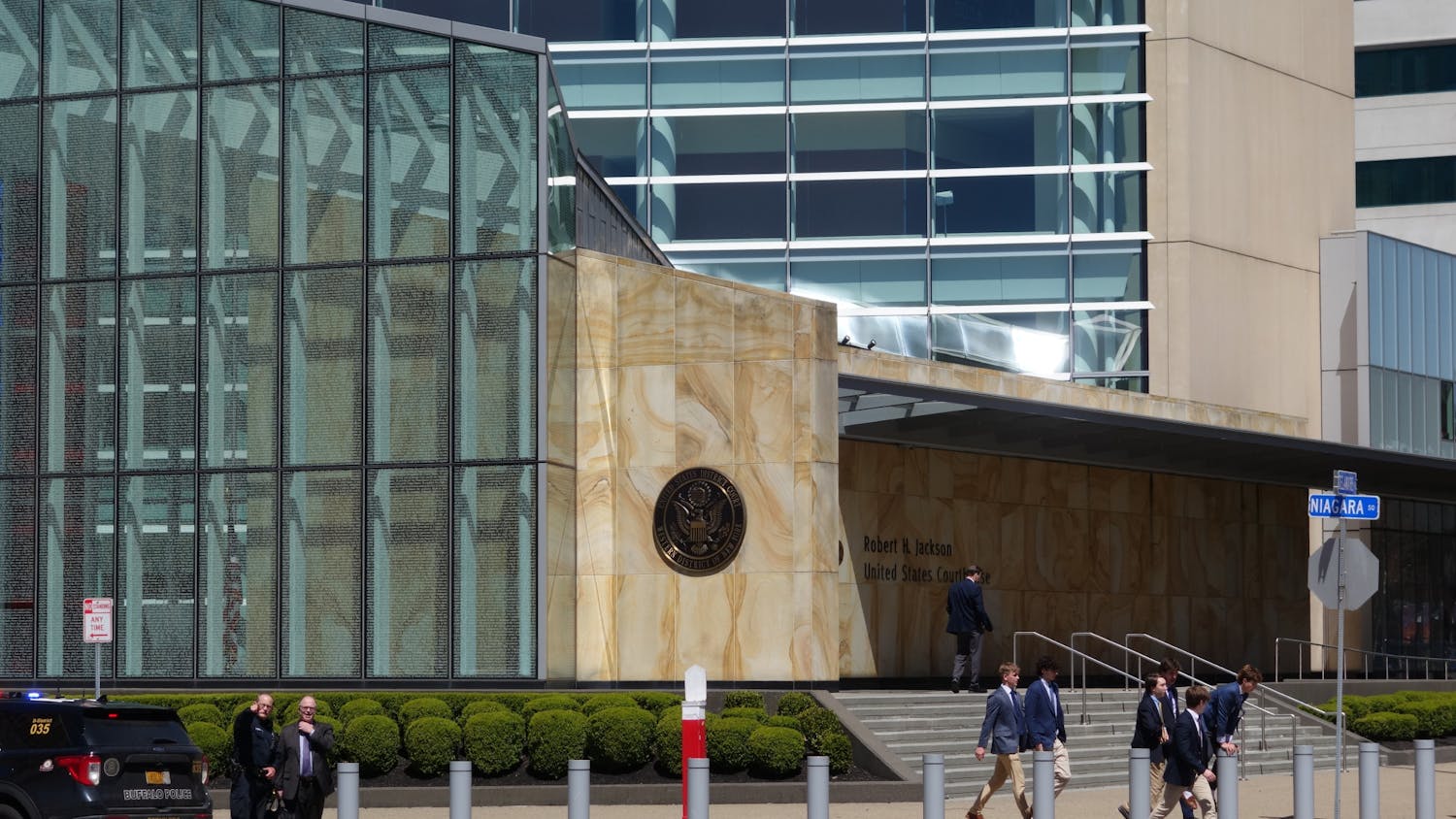Students and faculty concerned with the recent reduction in classrooms and the upkeep of the remaining ones may be able to look forward to changes.
The Faculty Senate Facilities Committee recently submitted a number of recommendations regarding maintenance and scheduling problems in classrooms to the administration.
According to the report by the Faculty Senate Facilities Committee, centrally scheduled classrooms on campus have gone from a usage of 285 in 1978 to the current number of 138, without a decrease in enrollment numbers.
Joseph Zambon, professor of periodontics and endodontics and a member of the FSEC, said the term "centrally scheduled classrooms" refers to classrooms, such as Knox 20, that are maintained and scheduled by the university as opposed to being controlled by the medical or law school.
According to Zambon, each year, between the hours of 10 a.m. and 3 p.m., utilization is over 90 percent across the campuses.
"There is not a lot of space to put classes," said Zambon. "... It is very hard to match the needs for scheduled courses."
Brandi Spataro, a sophomore nursing major, said the school seems to be more concerned about maximizing fiscal resources than student education.
"The school needs to think about what will be the ideal learning environment for the students who spend money to go here," said Spataro. "With a lack of available classrooms, as the demand for a class increases more students will be forced into the available space - anything to save money."
Kevin Seitz, vice president for University Services, is responsible for classroom issues related to facilities. Seitz said the university's abundance of classrooms was reduced and used for other purposes, such as administrative space, research or other academic purposes.
"In past years we have had more capacity than what we have needed, so we have reduced that," said Seitz.
If the decrease in classroom space continues, Zambon said, "At some point, it could be a very big problem," said Zambon.
Jessica Gyurics, a junior psychology major, said the university should open up the remaining 10 percent of classes to accommodate more students.
"I would much rather have my 8 o'clock class at 12," said Gyurics. "I think the university should consider the demands of the students instead of what benefits them the most monetarily."
According to Seitz, 107 classrooms on South Campus were used in 1978; the number now has dropped to 16 because most of the classes have moved out to North Campus to meet student demand.
"Our goal is to try to use the classrooms 100 percent through the week and through the day," said Seitz.
According to Seitz, the problem does not lie with the availability of the classrooms, but with the preferences of the students and faculty.
"We still have the ability to teach more classes in the classrooms that we have," he said. "Not everyone wants to teach at 8 o'clock in the morning."
Faculty want to teach at a time when students will be the most responsive, said Zambon.
"There is also a concern of the faculty that you can be teaching a class at 3 o'clock in the morning, but that is not the most optimal time for students to learn," said Zambon.
Sean Sullivan, vice provost for enrollment and planning, is responsible for concerns dealing with classroom scheduling but could not be reached for comment.
Zambon said the faculty also has concerns about the number of students allowed in classrooms and the related ability to administer exams.
"It is virtually impossible for them not to look on another student's paper," said Zambon.
The Facilities Committee would like the university to adopt new standards of "student density." Currently, each student in a class is allotted a 16-square-foot space in which to work, or about four-by-four feet. The new proposal would increase that to about five feet by four feet, or 20 square feet.
Seitz said the recommendations made by the committee are being considered based on their cost and need.
"You look at the ones that you can do the easiest first," said Seitz.
Innus, Seitz and Sullivan have attended the committee's meetings, and Zambon said he is pleased with their participation.
"They have been very responsive," said Zambon.
"Together, we will try to work it out to get the classrooms in the best possible shape that we can," said Seitz.





